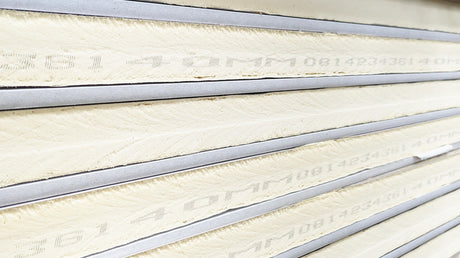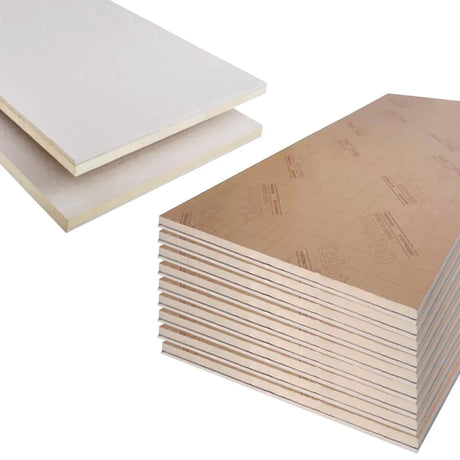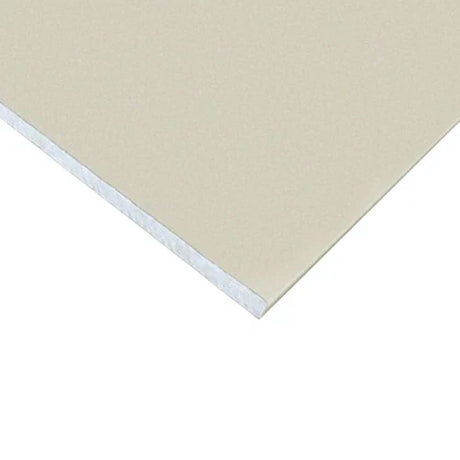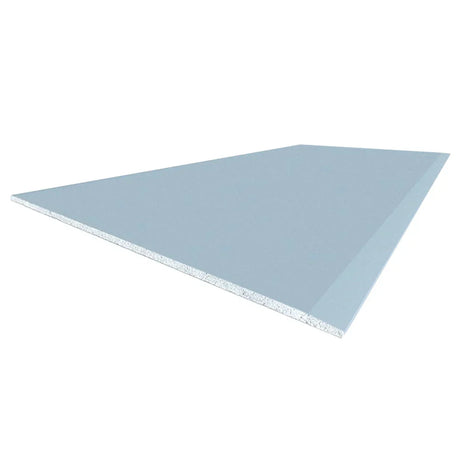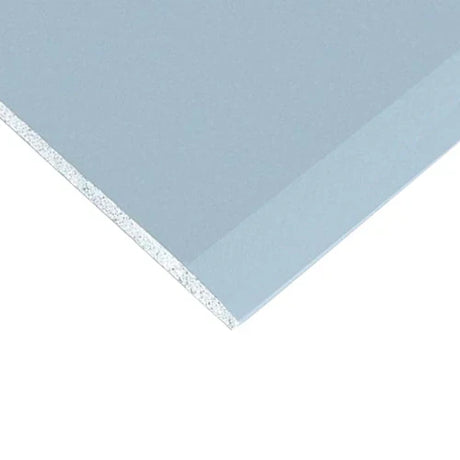Understanding the specific differences between standard and acoustic plasterboard helps inform appropriate material selection for different applications. While visually similar, these products feature significant variations in composition, physical properties, and performance characteristics.
Material Composition Differences
Core Material Formulation Standard plasterboard utilises a basic gypsum core combining calcium sulfate dihydrate with minor additives for workability and fire resistance. This formulation prioritises cost-effectiveness and basic functional requirements without specific acoustic enhancement.
Acoustic plasterboards incorporate specialised additives that modify the core's mechanical properties. Leading UK products like British Gypsum's SoundBloc contain polymer modifications and increased density materials that enhance the board's ability to attenuate sound energy. These formulations are specifically engineered to provide damping characteristics that convert sound vibrations into minimal heat through friction between molecules.
Density and Mass Variations One of the most significant differences lies in the boards' physical density. Standard plasterboard typically has a density of 700-800kg/m³, while acoustic variants achieve 800-1000kg/m³ through modified formulations and manufacturing processes.
This density difference translates to practical weight variations: a standard 12.5mm board weighs approximately 8-9kg/m², while equivalent acoustic board weighs 11-13kg/m². This increased mass directly improves sound attenuation through the fundamental principle of mass law, where doubling the mass typically improves sound reduction by approximately 5-6dB.
Fibre Reinforcement Premium acoustic plasterboards often incorporate fibrous reinforcement throughout the core material. Products from manufacturers like Knauf and Siniat utilise glass fibre or similar materials distributed throughout the gypsum matrix, creating a composite structure that provides enhanced strength while further improving sound damping characteristics.
This reinforcement also contributes to better impact resistance and reduced susceptibility to cracking under acoustic vibration—important considerations for long-term acoustic performance maintenance.
Performance Characteristics Comparison
Sound Transmission Reduction The most obvious difference appears in acoustic performance metrics. In identical construction arrangements, acoustic plasterboard typically provides 3-5dB better sound insulation than standard board of equivalent thickness. While this improvement might seem modest, it represents a noticeable difference in perceived noise levels, as a 5dB reduction equates to approximately 25% less perceived loudness.
The performance advantage becomes particularly significant when used in optimised acoustic systems with appropriate framing and insulation, where the cumulative benefit of acoustically enhanced components can achieve 10-15dB improvement over standard constructions.
Frequency Response Characteristics Acoustic plasterboard is engineered to provide more balanced sound attenuation across different frequency ranges. While standard plasterboard offers reasonable high-frequency reduction but poor low-frequency performance, acoustic variants provide more consistent attenuation across the spectrum, with particular improvement in the critical speech frequency range (500-4000Hz).
This balanced frequency response makes acoustic plasterboard especially effective against neighbour noise involving conversation, television sound, or similar domestic noise sources that primarily occupy the mid-frequency range.
Fire Performance Considerations Both standard and acoustic plasterboard provide fire resistance, with most products achieving Class A2-s1, d0 European fire classification. However, the increased density and modified composition of acoustic boards often provide slightly enhanced fire resistance, with 15mm acoustic plasterboard typically achieving 10-15% longer fire resistance duration than standard board of equivalent thickness.
This complementary benefit makes acoustic plasterboard particularly valuable in situations requiring both acoustic and fire performance, such as separating walls between residential units or in commercial buildings with specific compartmentation requirements.
Installation and Practical Differences
Handling and Cutting Characteristics The increased density of acoustic plasterboard makes it noticeably heavier to handle and slightly more challenging to cut. While standard installation tools remain suitable, the boards require more effort to score and snap cleanly, and power tools will experience increased wear when cutting acoustic boards.
These practical differences should be considered when planning installation, particularly for ceiling applications or when cutting complex shapes, where the additional weight and resistance can impact installation efficiency.
Fixing Requirements The increased mass of acoustic plasterboard necessitates more robust fixing methods to ensure secure attachment. While standard boards might be adequately fixed with screws at 300mm centres, acoustic variants typically require fixings at 230mm centres, with particular attention to perimeter fixing to prevent acoustic leakage.
For ceiling applications, the additional weight may require closer support centres or more substantial supporting framework, considerations that should be incorporated into initial design specifications to ensure appropriate structural support.
Joint Treatment Importance While joint treatment is important for all plasterboard installations, it becomes particularly critical for acoustic variants. Any weakness in joint finishing can create acoustic leakage paths that disproportionately compromise overall performance.
Manufacturers typically recommend specific acoustic jointing compounds like British Gypsum's Gyproc SoundCoat Plus for optimum results, combined with careful reinforcement of joints using appropriate tape systems and particular attention to perimeter sealing against adjacent structures.
Cost-Benefit Considerations
The enhanced performance of acoustic plasterboard comes with higher material costs compared to standard variants. However, when assessed in the context of overall project costs and long-term value, this premium often represents excellent value:
-
In new construction, the cost difference between standard and acoustic plasterboard typically represents a very small percentage of overall project costs while providing significant quality-of-life benefits through improved acoustic separation.
-
For renovation projects addressing existing noise problems, acoustic plasterboard systems typically offer far more cost-effective solutions than major structural modifications or complicated retrofit treatments.
-
The increased density and robustness of acoustic plasterboard often provides extended service life and better resistance to damage, particularly in high-traffic areas or family homes, representing additional value beyond pure acoustic performance.
For applications where acoustic performance has any significance, the enhanced characteristics of acoustic plasterboard justify the moderate cost premium through tangible improvements in occupant comfort and wellbeing.




